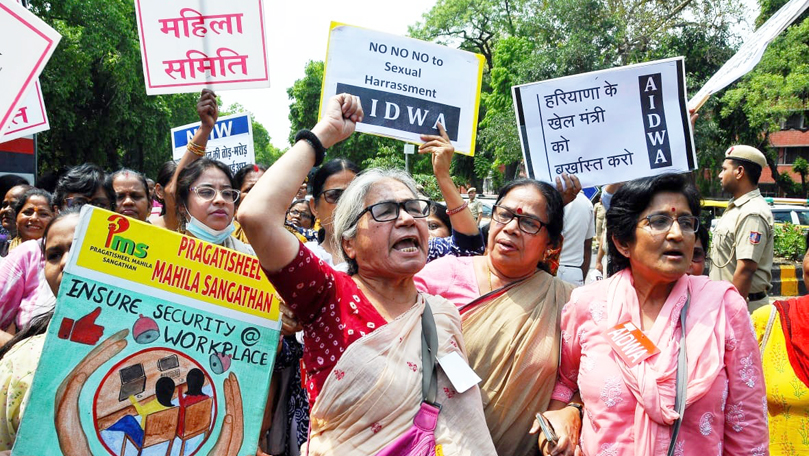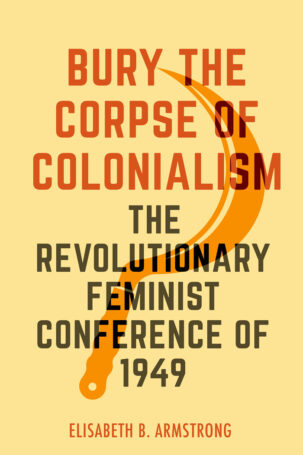
This article originally appeared in CounterPunch and is being republished with permission from the author.
Since the word feminism became a word, it has had multiple meanings. The one probably most familiar to women and men of the global north is a feminism that demands and organizes for women’s legal and political rights within the economic and political system called democratic capitalism. This version of feminism ignores the economic inequalities built into that system, focusing instead on gaining individual rights inside it. This is especially true when it comes to acknowledging the role colonialism and imperialism play in the oppression of working class and peasant women in the colonies and inside the imperial nations. Together with the nature of the patriarchy, it was this understanding of feminism that discouraged many Left organizations from taking up the feminist banner before the second wave of feminist struggle that took place in the late 1960s and early 1970s.
While that upsurge of feminist organizing had its own difficulties and differences related to the particular situation at the time and confusions around direction and politics, there were elements within it that addressed the nature of imperialism and capitalism. Indeed, the analyses the women and groups incorporating an anti-imperialist element into their feminist organizing have existed as an undercurrent ever since. It can perhaps be best described in the words of Elisabeth B. Armstrong in her new book, Bury the Corpse of Colonialism: The Revolutionary Feminist Conference of 1949 where she writes about the work of the revolutionary Gita Bandyopadhyay: “She organized along the grain of the communist tradition: provide relief for daily needs and build the means for women to determine their own demands.” (142-3)
 Armstrong’s text is an extremely important addition to both feminist and left history. It is also a useful primer on post-World War Two imperialism and its various manifestations around the globe. In highlighting the conference referred to in the title, the author has expanded the nature and history of feminism beyond the bourgeois western roots it has stagnated in since the highlight years of the 1970s. Furthermore, the text demands a feminism that fights for all women, not just the privileged few. At the time of the conference, this was understood to mean an opposition to imperialism and its wars. In 1949 and for years afterwards, that meant opposing the US wars in Korea, Vietnam and Latin America, British, Dutch and French wars in their rebelling colonies, and the comprehension that the U.S. Marshall Plan for Europe was not a gift from Washington, but a means to incorporate Europe into Washington’s postwar empire.
Armstrong’s text is an extremely important addition to both feminist and left history. It is also a useful primer on post-World War Two imperialism and its various manifestations around the globe. In highlighting the conference referred to in the title, the author has expanded the nature and history of feminism beyond the bourgeois western roots it has stagnated in since the highlight years of the 1970s. Furthermore, the text demands a feminism that fights for all women, not just the privileged few. At the time of the conference, this was understood to mean an opposition to imperialism and its wars. In 1949 and for years afterwards, that meant opposing the US wars in Korea, Vietnam and Latin America, British, Dutch and French wars in their rebelling colonies, and the comprehension that the U.S. Marshall Plan for Europe was not a gift from Washington, but a means to incorporate Europe into Washington’s postwar empire.
Dividing the book into four chapters not including the introduction and conclusion, Armstrong expertly weaves the stories of individual women from different nations with a sharp and informed presentation of what she calls revolutionary women’s praxis into her narrative. The individual’s tales include the account of a Vietnamese woman Ho Thi Minh and her trek on foot from the liberated highlands of northern Vietnam to Beijing — a journey that took six months for the National Liberation Front fighter. Another chronicles the lifelong friendship between the aforementioned Gita Bandyopadhyay and the U.S. communist Betty Millard; their work together in Paris as members of the Women’s International Democratic Federation (WIDF) executive board and organizers of its campaign for peace (and against U.S. imperial war) in Korea.
Armstrong reminds the reader that Ho Chi Minh, the Vietnamese revolutionary, once stated, “If we don’t liberate women, we won’t liberate half of the human race.” It is this consideration that informed the women and the movements discussed in this text. Likewise, it is an essential element of the author’s approach in the narrative therein. It is also essential to what became a greater role for women in movements against war and imperialism and for social justice. As Bury the Corpse of Colonialism makes abundantly clear, it was the 1949 conference discussed in the book that was an early manifestation of Ho Chi Minh’s later statement. Likewise, that conference forced the international Left to acknowledge the essentiality of women’s fight for liberation to its own liberation struggles aimed at ending colonialism. The publication of this text finally brings the conference to its proper place in feminist, Left and yes, world history.
Images: All India Democratic Women’s Association (Facebook); Bury the Corpse of Colonialism book cover (University of California Press)


 Join Now
Join Now